Introduction: Breaking Barriers to Build a Stronger, Healthier You
Embarking on a transformative fitness journey requires not only motivation and commitment but also a strategic and well-structured approach tailored to individual needs. For many men carrying excess weight, the path to improved health and strength can feel daunting. However, a powerful fat guy workout plan offers a safe, effective, and motivating way to build strength, burn fat, and increase overall fitness without risking injury or burnout. The phrase “fat guy workout” often carries an unfair stigma, yet it actually represents an important category of fitness strategies designed with specific biomechanical, metabolic, and psychological considerations in mind. This article will explore how overweight men can leverage scientifically backed workouts to unlock their strength potential and safely transform their health and lifestyle.
You may also like: The Ultimate 30-Day Workout Plan for Men Working Out in the Gym: Proven Full Body Strength Exercises to Maximize Results
Understanding the Unique Challenges and Opportunities
Overweight individuals often face physical and psychological barriers that differ from those of their leaner peers. These challenges can include limited joint mobility, higher impact forces during movement, reduced cardiovascular endurance, and the emotional toll of social pressure or past fitness failures. However, these perceived limitations can also become opportunities. The greater muscle mass that often accompanies increased body fat provides a strong foundation for resistance training. Similarly, the drive to improve health and self-image can fuel a deeper and more lasting commitment to exercise when approached with care and encouragement.
Designing an effective fat man workout begins with understanding these variables and respecting the body’s current capabilities while planning for progressive overload. The goal is not rapid, unsustainable weight loss, but rather the cultivation of strength, endurance, and mobility in a way that supports long-term success. By approaching this process with patience, education, and consistency, any individual can take control of their physical health regardless of their starting point.
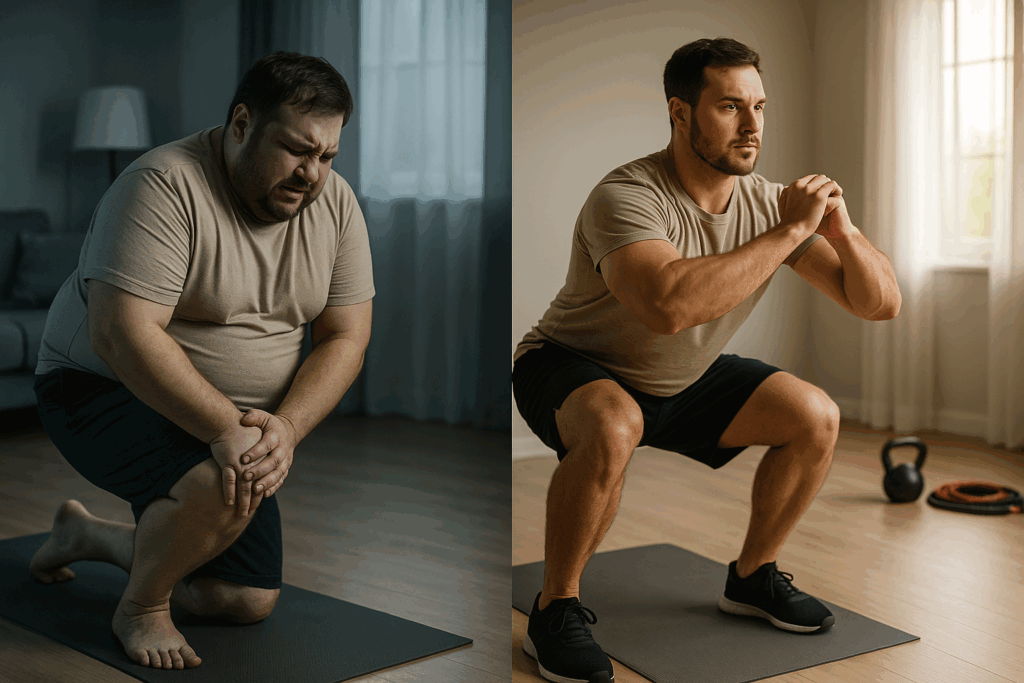
Key Components of a Safe and Effective Fat Guy Workout
A comprehensive fat guy workout plan must be structured around several key pillars. These include strength training, cardiovascular conditioning, mobility and flexibility work, and recovery. Each component plays a unique role in enhancing physical performance, reducing the risk of injury, and promoting sustainable fat loss.
Strength training should focus on compound movements that recruit multiple muscle groups, such as squats, deadlifts, push-ups, and rows. These exercises build muscle mass, increase metabolic rate, and improve joint stability. For beginners, bodyweight variations and resistance bands may be ideal starting points to avoid excessive strain on joints.
Cardiovascular exercise, when combined with strength training, accelerates fat loss and supports heart health. However, high-impact cardio such as running can be difficult for individuals with higher body weight. Low-impact alternatives like cycling, rowing, swimming, or elliptical machines are excellent choices that reduce joint stress while still providing an intense aerobic stimulus.
Mobility work is critical but often neglected. Overweight individuals may experience tightness in the hips, lower back, and shoulders due to prolonged sedentary habits or carrying excess weight. Daily stretching routines, dynamic warm-ups, and foam rolling can dramatically improve range of motion, prevent injury, and enhance workout performance.
Finally, recovery is non-negotiable. Quality sleep, hydration, proper nutrition, and rest days are all essential. A well-rounded program that honors recovery allows the body to adapt and grow stronger between training sessions, rather than becoming chronically fatigued or injured.
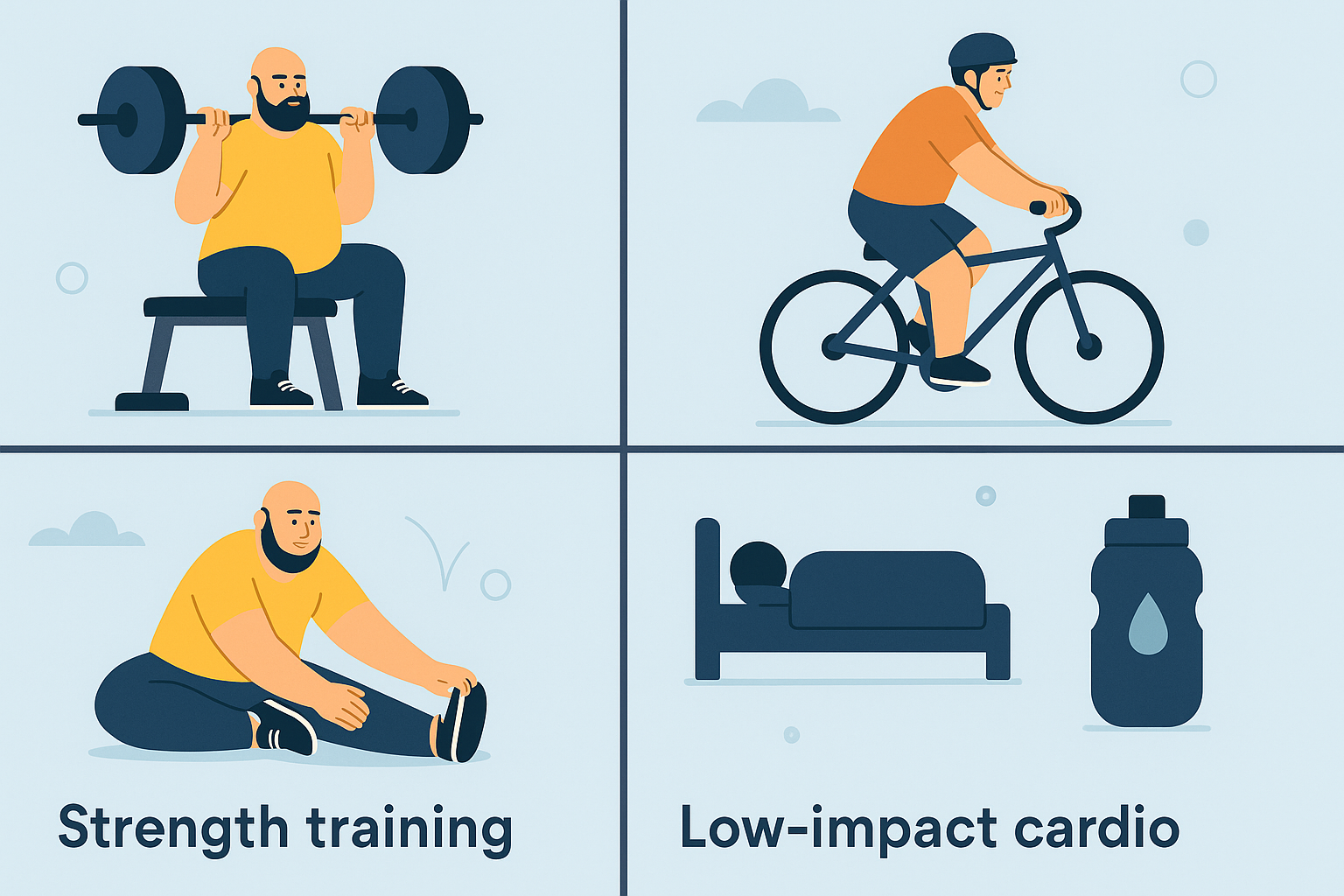
Crafting a Beginner-Friendly Strength Routine for Fat Men
When developing a beginner strength training program for overweight individuals, safety and sustainability must come first. The foundation of any successful fat man workout lies in slow, deliberate progress and intelligent exercise selection.
Start with three full-body strength sessions per week, focusing on fundamental movement patterns. For example, a Monday-Wednesday-Friday routine could alternate between squats, hip bridges, seated rows, incline push-ups, and overhead dumbbell presses. Begin with two sets of 10–12 repetitions at a controlled pace, allowing for proper form and muscular engagement.
Machines can be a helpful starting point to control range of motion and offer stability, but as strength and confidence increase, transitioning to free weights and functional movements enhances core activation and balance. Rest intervals should be adequate—usually 60 to 90 seconds—to allow for recovery without compromising intensity.
Over time, progression should be implemented through increasing resistance, adding sets, or reducing rest time. However, progression must be gradual to accommodate joint stress and ensure continued proper form. Keeping a training journal or using a fitness app to log progress can offer both practical feedback and motivational reinforcement.
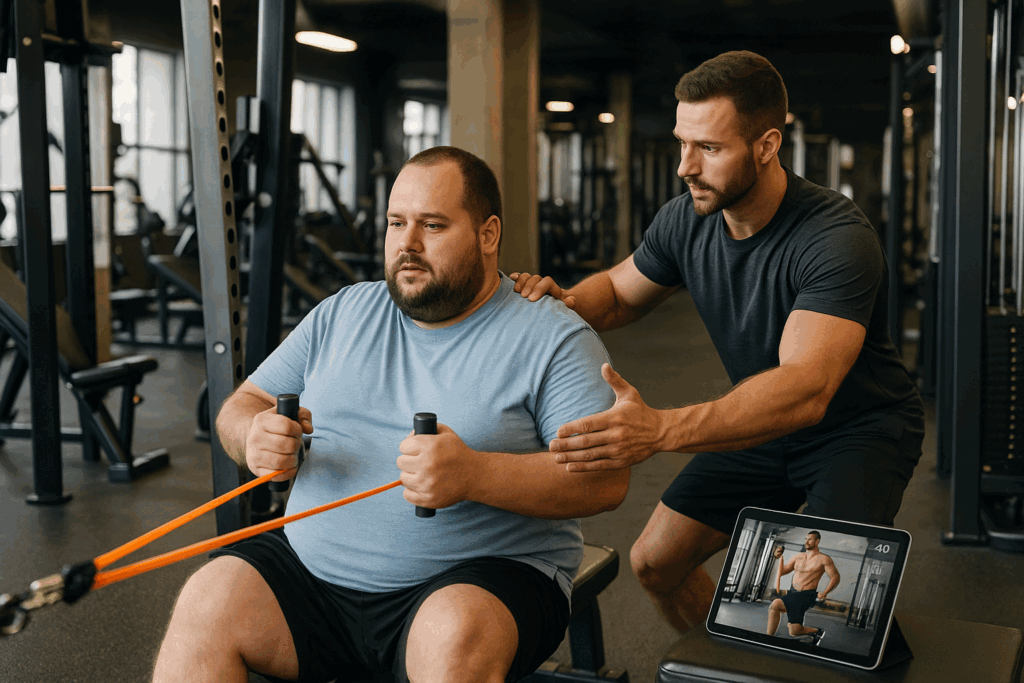
Integrating Low-Impact Cardio for Fat-Burning and Endurance
Cardiovascular training plays a vital role in a comprehensive fat guy workout, offering both metabolic and psychological benefits. The key for overweight individuals is to emphasize low-impact modalities that protect joints while still delivering an effective fat-burning stimulus.
Walking is perhaps the most accessible and underrated form of cardio. Brisk walks of 30 to 45 minutes, five times per week, can significantly boost caloric expenditure and improve cardiovascular function. To increase intensity, individuals can incorporate intervals of uphill walking or wear a weighted vest for added resistance.
Swimming and aquatic workouts are exceptional for heavier individuals. The buoyancy of water reduces joint pressure while offering natural resistance, making it ideal for improving cardiovascular capacity and muscle tone simultaneously. Likewise, using machines like the recumbent bike or elliptical trainer offers seated, stable platforms for aerobic work with adjustable intensity.
Rowing machines are another excellent choice, engaging both upper and lower body muscles while keeping the user seated and supported. A sample routine might include 20 minutes of steady-state cardio on non-lifting days, eventually progressing to 30–45 minutes with interval variations to keep the body challenged and adaptable.
Mental endurance also grows with cardio practice. Regular aerobic sessions enhance discipline, improve sleep quality, and lower stress hormones, all of which contribute to more effective strength training and healthier lifestyle habits.

Building Confidence Through Consistency and Mental Fitness
For many men starting a fat guy workout program, the psychological hurdles can be more challenging than the physical ones. Negative self-image, fear of judgment, and past experiences with failed diets or exercise plans can erode motivation. However, building mental fitness is a crucial part of success and must be nurtured with as much intention as physical training.
Creating a consistent routine is the first step. Habits, not willpower, drive results. Designate specific days and times for workouts, treat them as non-negotiable appointments, and use reminders or accountability systems to reinforce consistency. This structured approach gradually reduces the resistance that often accompanies lifestyle change.
Visualization and positive self-talk can also play a powerful role. Before workouts, take a moment to mentally rehearse each movement, imagine finishing strong, and speak affirmations that reinforce strength and resilience. Over time, these practices reshape neural pathways and improve confidence, both inside and outside the gym.
Additionally, tracking non-scale victories—such as increased energy, better sleep, improved mobility, or completing a full workout—provides tangible reinforcement of progress and encourages continuation. Joining supportive fitness communities, whether in person or online, also helps create a sense of belonging and shared purpose, reinforcing commitment and emotional resilience.
Essential Mobility and Flexibility Work for Overweight Beginners
While strength and cardio often take center stage, mobility and flexibility are foundational to functional movement and injury prevention. Overweight individuals may struggle with range-of-motion limitations in the hips, spine, and shoulders, making daily mobility work a vital component of the fat guy workout plan.
Dynamic stretching before workouts prepares the body for exercise by increasing circulation and activating neuromuscular pathways. Movements such as leg swings, hip circles, arm circles, and torso rotations help lubricate joints and reduce stiffness. These should be performed slowly and deliberately, avoiding jerky motions that can strain connective tissue.
After workouts or on rest days, static stretching routines promote muscle recovery and long-term flexibility. Key areas to target include the hamstrings, quadriceps, hip flexors, calves, lower back, and chest. Each stretch should be held for 30 to 60 seconds and repeated for two to three rounds per muscle group.
Foam rolling or self-myofascial release is another valuable tool. By applying gentle pressure to tight areas like the IT band, glutes, or thoracic spine, individuals can break up adhesions and improve circulation, enhancing recovery and reducing muscle soreness.
Incorporating yoga or tai chi classes designed for larger bodies can also introduce mindfulness and balance while improving posture and flexibility. The goal is not to become a contortionist, but to move with ease, confidence, and control in daily life and during workouts.
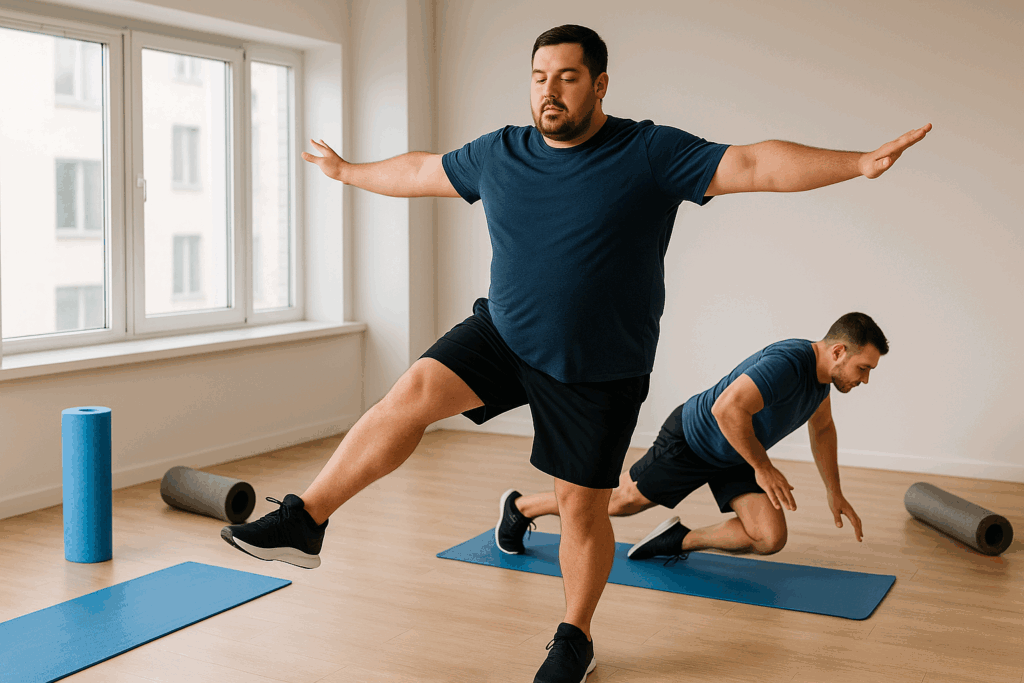
Designing a Weekly Training Plan That Works
Creating a balanced and sustainable weekly schedule is essential for success. A well-structured fat guy workout plan should include multiple components while allowing for adequate rest and recovery. A sample weekly template might look like this:
- Monday: Full-body strength training + 15-minute brisk walk
- Tuesday: 30-minute low-impact cardio (e.g., swimming or cycling)
- Wednesday: Full-body strength training + mobility session
- Thursday: Rest or gentle yoga/stretching
- Friday: Full-body strength training + short rowing intervals
- Saturday: 45-minute walk or aquatic cardio
- Sunday: Rest and recovery
This type of plan ensures frequency, variety, and progression without overwhelming the body or causing burnout. Flexibility is key—if a day is missed, simply resume the next scheduled workout rather than trying to double up or compensate. The goal is consistency over perfection.
Tracking workouts, energy levels, mood, and sleep quality provides insights that can help adjust intensity or volume as needed. As strength and endurance improve, the plan can evolve to include more challenging variations or longer durations, always with the individual’s capacity in mind.
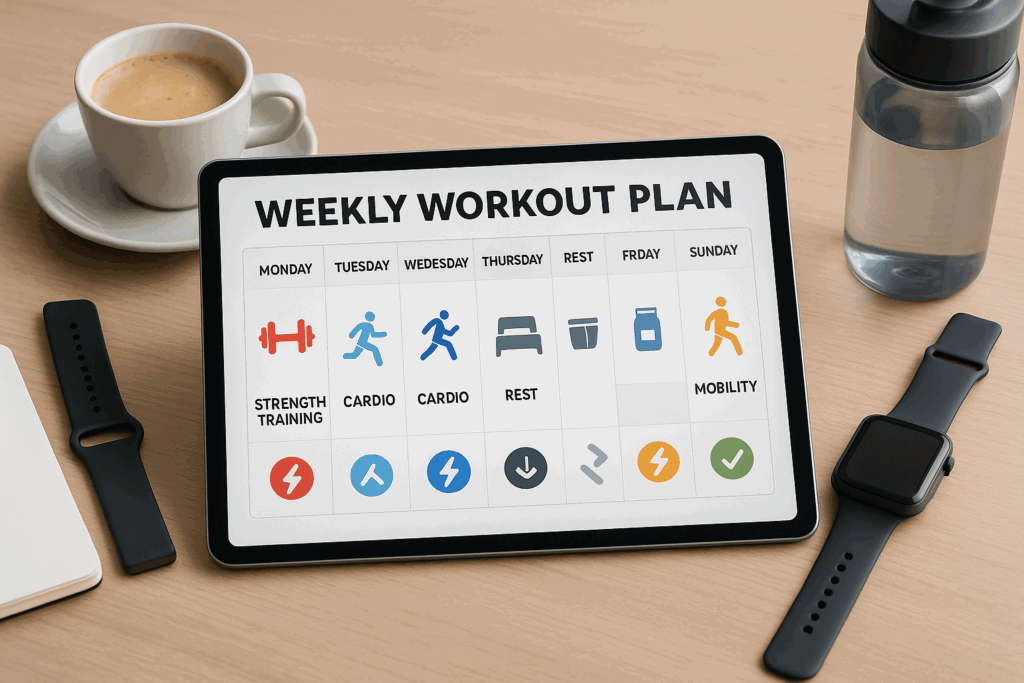
Overcoming Setbacks and Staying on Track Long-Term
Any transformative journey comes with obstacles. Soreness, plateaus, life disruptions, and motivation dips are all part of the process. What sets successful transformations apart is the ability to navigate these setbacks without derailing progress.
The most effective strategy is reframing challenges as data points, not failures. If soreness prevents a workout, it’s a cue to stretch or rest—not to quit. If weight loss stalls, it may signal a need to adjust nutrition or increase activity, not a sign that the program isn’t working.
Planning for setbacks in advance also builds resilience. Keep alternative workout options handy for busy days, such as a 20-minute home routine or a walk during lunch. Identify motivational anchors—such as health goals, family commitments, or a desired lifestyle—and revisit them regularly.
Surrounding oneself with a strong support system is equally important. Having a coach, workout partner, or online community can provide encouragement, accountability, and inspiration when motivation wanes. Progress photos, fitness milestones, or even journaling can create tangible reminders of how far you’ve come.
Ultimately, success in a fat guy workout plan is not about perfection but persistence. Consistently showing up, learning from feedback, and honoring the body’s needs lead to sustainable transformation.
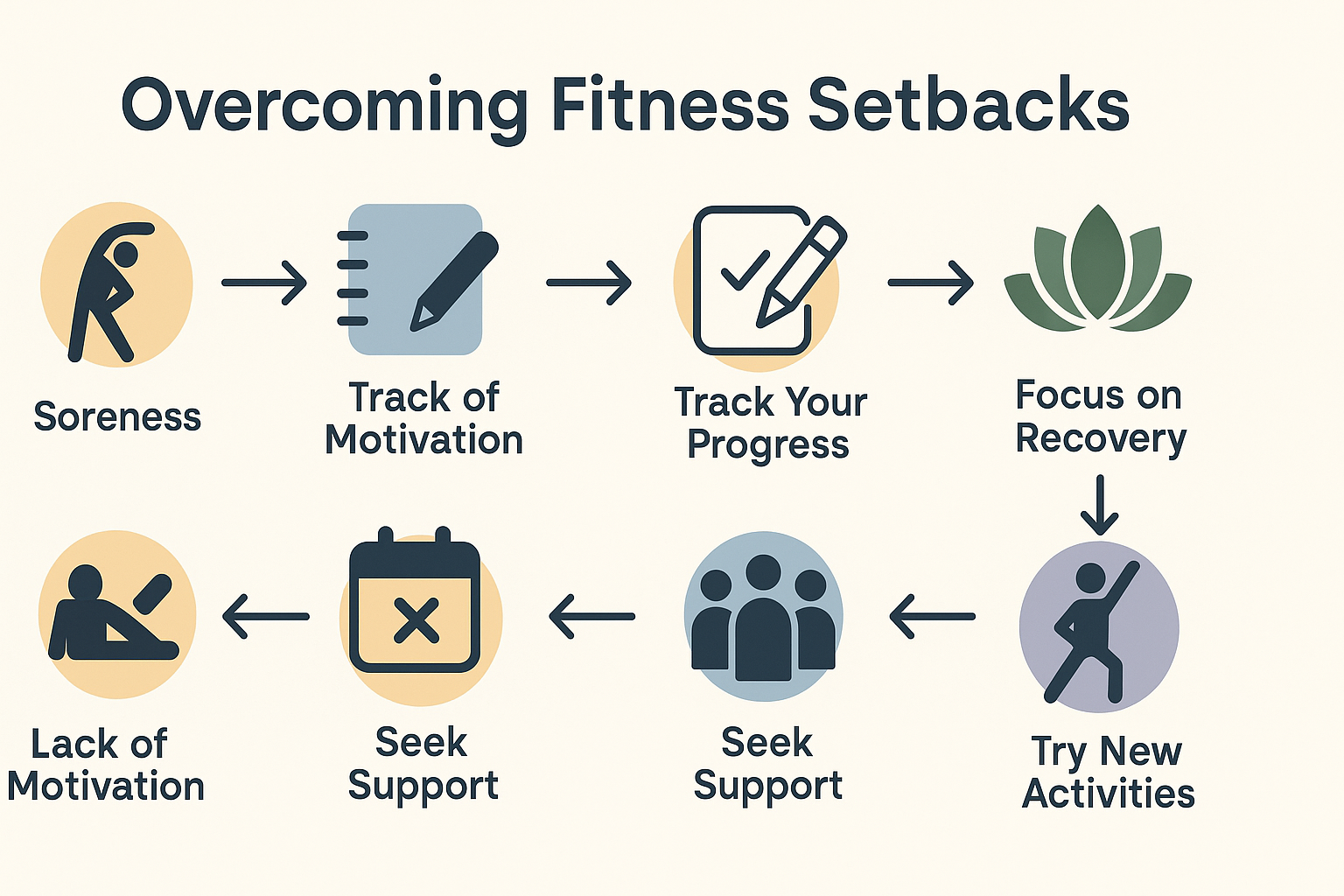
Frequently Asked Questions (FAQ) About Starting a Fat Guy Workout Safely and Effectively
1. What’s the most overlooked reason why a fat guy workout plan often fails in the long term?
One of the most overlooked reasons is the lack of psychological readiness and habit-building strategies. Many individuals begin a fat guy workout with intense motivation but without creating the necessary mental framework to sustain it. This includes setting unrealistic expectations, using negative self-talk, or lacking a system of accountability. Fitness must be integrated into daily life as a behavior, not treated as a temporary project with an endpoint. Long-term success depends on building supportive environments, learning how to reset after inevitable setbacks, and practicing patience as the body adapts over months—not weeks.
2. How can a fat man workout routine be customized for someone with chronic joint pain?
Customization begins with a comprehensive understanding of the individual’s mobility, previous injuries, and joint limitations. For example, someone with knee pain might prioritize seated or lying resistance exercises like leg presses or hamstring curls over high-stress movements like squats. Water-based workouts are also highly effective for this group, as they reduce load on painful joints while allowing full-body engagement. Including therapeutic practices such as aquatic therapy, kinesiology taping, and targeted physical therapy exercises can enhance both recovery and strength building. A well-structured fat man workout doesn’t ignore chronic conditions—it adapts around them with purpose and care.
3. What role does metabolic conditioning play in a fat guy workout, and how should it be introduced?
Metabolic conditioning refers to high-efficiency training methods that improve both cardiovascular capacity and muscular endurance. In the context of a fat guy workout, it should be introduced carefully—starting with low-impact interval training such as rowing for 30 seconds on, 90 seconds off. Over time, this evolves into circuit training that alternates strength and cardio moves with minimal rest. The goal is to condition the body’s energy systems to become more efficient at burning fat while preserving lean muscle mass. Metabolic conditioning becomes especially valuable once a solid foundation of strength and joint stability has been established.
4. Are there specific nutritional strategies that complement a fat man workout for better results?
Yes, though the approach should be individualized, certain principles apply broadly. Instead of focusing solely on caloric restriction, it’s more effective to emphasize nutrient timing, protein distribution, and glycemic load management. Eating 20–30 grams of high-quality protein within 60 minutes post-workout helps stimulate muscle repair and growth. Additionally, reducing processed carbohydrate intake while increasing fiber-rich vegetables supports improved insulin sensitivity, which is often a challenge in overweight individuals. Lastly, hydration and micronutrient sufficiency (like magnesium and vitamin D) play critical roles in energy metabolism and should not be underestimated.
5. How can someone incorporate active recovery into a fat guy workout without derailing progress?
Active recovery is essential and often accelerates progress rather than impeding it. Activities like walking, gentle swimming, or mobility-focused yoga on off days enhance circulation, reduce inflammation, and improve joint health. Foam rolling and breathing techniques can also be included to regulate the nervous system and support parasympathetic activity, which promotes tissue healing. These strategies allow the body to stay in motion without the stress of traditional workouts. Importantly, integrating active recovery also provides psychological consistency, helping individuals maintain routine and momentum.
6. What are the best mental strategies to overcome the gym intimidation many face with a fat man workout?
Gym intimidation is real, and it can be a major barrier for those starting a fat man workout. To counter this, begin by selecting fitness environments that offer inclusive programming—such as personal training studios or YMCA facilities known for community support. Wearing comfortable, performance-appropriate attire that builds confidence can help reduce self-consciousness. Having a pre-planned workout routine, whether on paper or through a mobile app, minimizes aimless wandering and boosts self-assurance. Visualization techniques, paired with affirmations like “I belong here,” slowly reframe the internal narrative from fear to ownership. Over time, consistent exposure erodes discomfort and builds empowerment.
7. How can someone track progress in a fat guy workout beyond the number on the scale?
The scale is just one data point and often the least informative in the short term. More nuanced progress tracking includes strength gains (e.g., improved reps or heavier weights), changes in body measurements, improved range of motion, better posture, and reductions in resting heart rate. Clothing fit and daily energy levels are also excellent markers of internal and external transformation. Taking monthly progress photos from multiple angles can visually capture improvements often missed in day-to-day mirrors. These indicators provide a fuller picture of health that builds confidence and confirms the effectiveness of the fat guy workout plan.
8. What are the best wearable technologies or fitness apps tailored to a fat man workout?
Fitness technologies have become more size-inclusive and performance-driven. For example, wrist-based heart rate monitors with large, adjustable bands like the Polar H10 or Garmin Venu are accurate and comfortable. Apps like Fitbod allow for tailored resistance programming that adapts to equipment availability and fatigue levels. MyFitnessPal remains a robust tool for nutrition tracking, but newer apps like MacroFactor offer more intuitive logging and automated calorie adjustments. For motivation, Strava and Apple Fitness+ offer community-driven metrics that make it easier to stay connected and accountable, even when training solo.
9. How does strength training affect hormone levels in a fat guy workout plan?
Strength training can profoundly improve hormonal health, especially for overweight men. Resistance exercise stimulates the release of testosterone and growth hormone—both essential for muscle growth, fat metabolism, and energy regulation. It also improves insulin sensitivity by increasing glucose uptake into the muscles, which helps regulate blood sugar and combat the risk of type 2 diabetes. Cortisol, the stress hormone, is also better regulated when physical exertion is balanced with sufficient recovery. These hormonal shifts, while gradual, create an internal environment that supports sustainable fat loss and overall health improvement in the context of a structured fat guy workout.
10. Can a fat guy workout evolve into more advanced training styles like powerlifting or CrossFit?
Absolutely, and in many cases, it should—once foundational strength and mobility have been established. Graduating from beginner routines to performance-based systems like powerlifting introduces measurable goals (e.g., deadlift personal records), which reinforce motivation and structure. CrossFit, while intense, can be highly scalable and many boxes offer beginner programs or personalized modifications. These advanced modalities bring community, competition, and a sense of identity that can profoundly shift a person’s relationship with fitness. Transitioning to these styles should always be guided by knowledgeable coaches who understand the individual’s history and goals to ensure safe and effective progression.
Final Thoughts: The Empowering Path to Strength and Fitness
Transforming your body with a powerful fat guy workout plan isn’t about meeting someone else’s ideal—it’s about reclaiming your health, strength, and confidence on your terms. The journey will demand effort, patience, and courage, but the rewards are profound. Better sleep, stronger joints, improved self-image, and enhanced energy for daily life are just the beginning.
This approach is rooted in science, empathy, and practical application. It honors where you are while guiding you forward with purpose. By combining intelligent strength training, joint-friendly cardio, mobility work, and a mindset of growth, any man—regardless of size—can unlock a healthier, more powerful version of himself.
So take the first step. Whether it’s lacing up your shoes for a walk or performing your first bodyweight squat, remember that progress is built one choice at a time. Your body is capable, your journey is valid, and your potential is unlimited. Embrace the challenge, and let strength lead the way.





